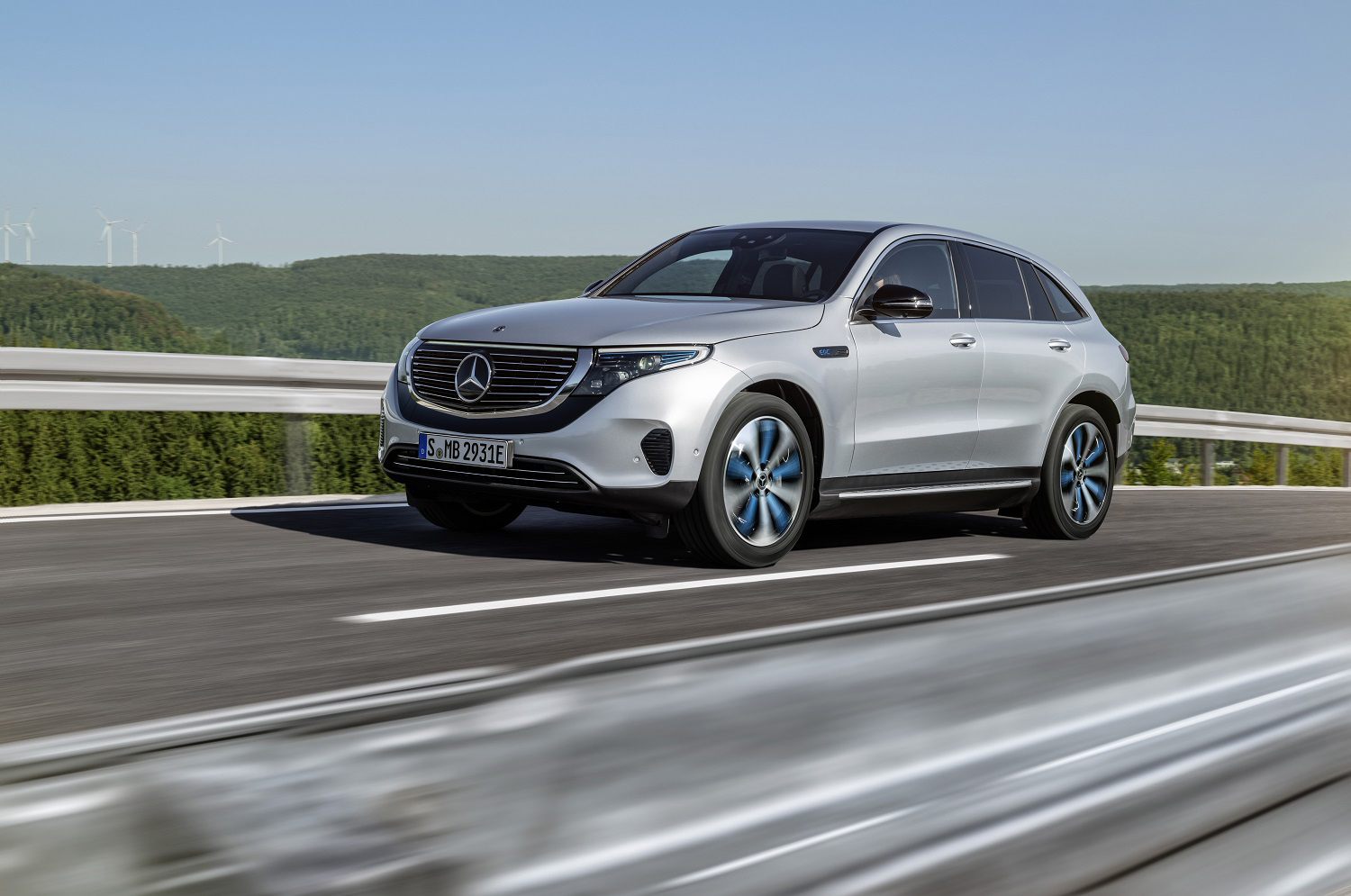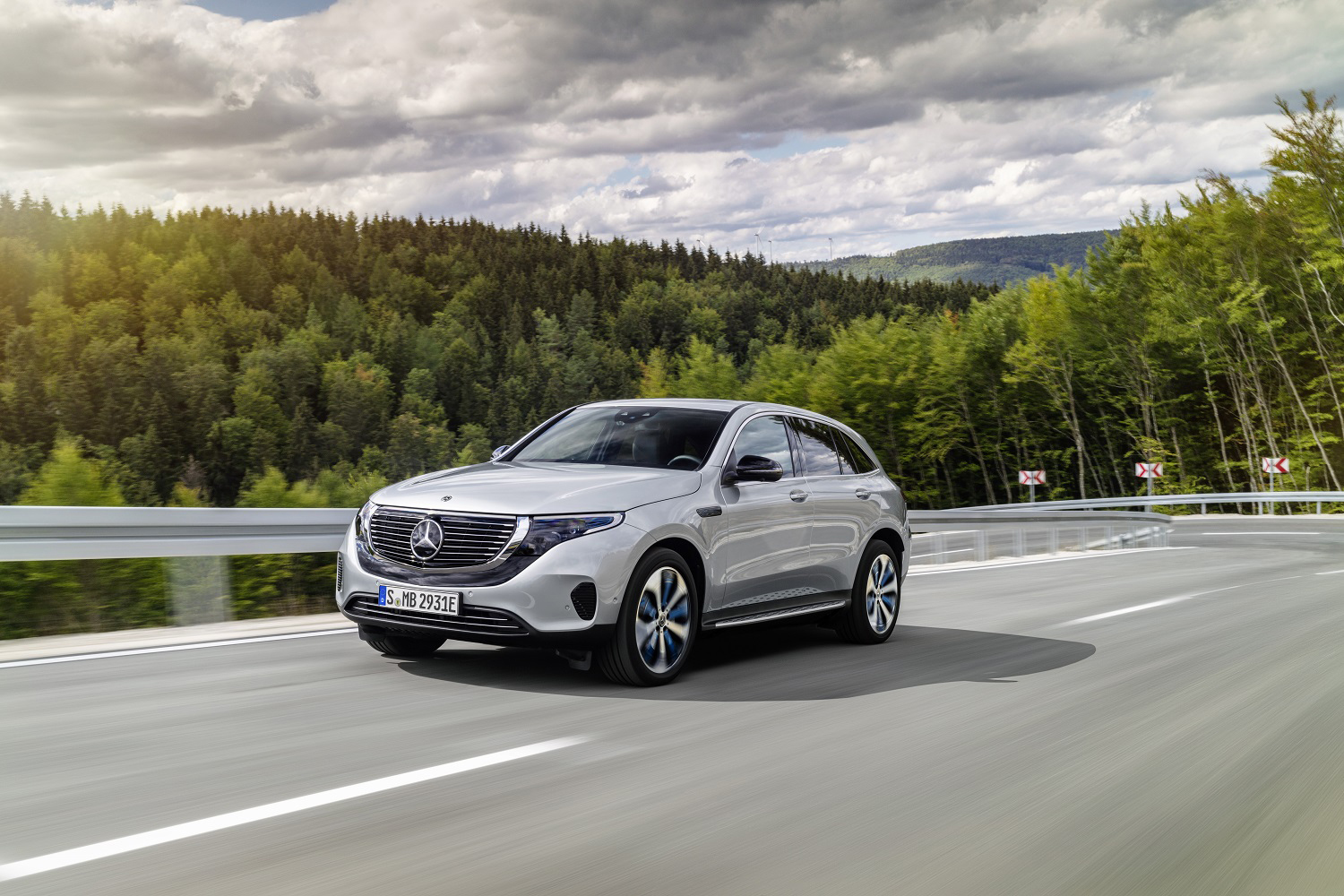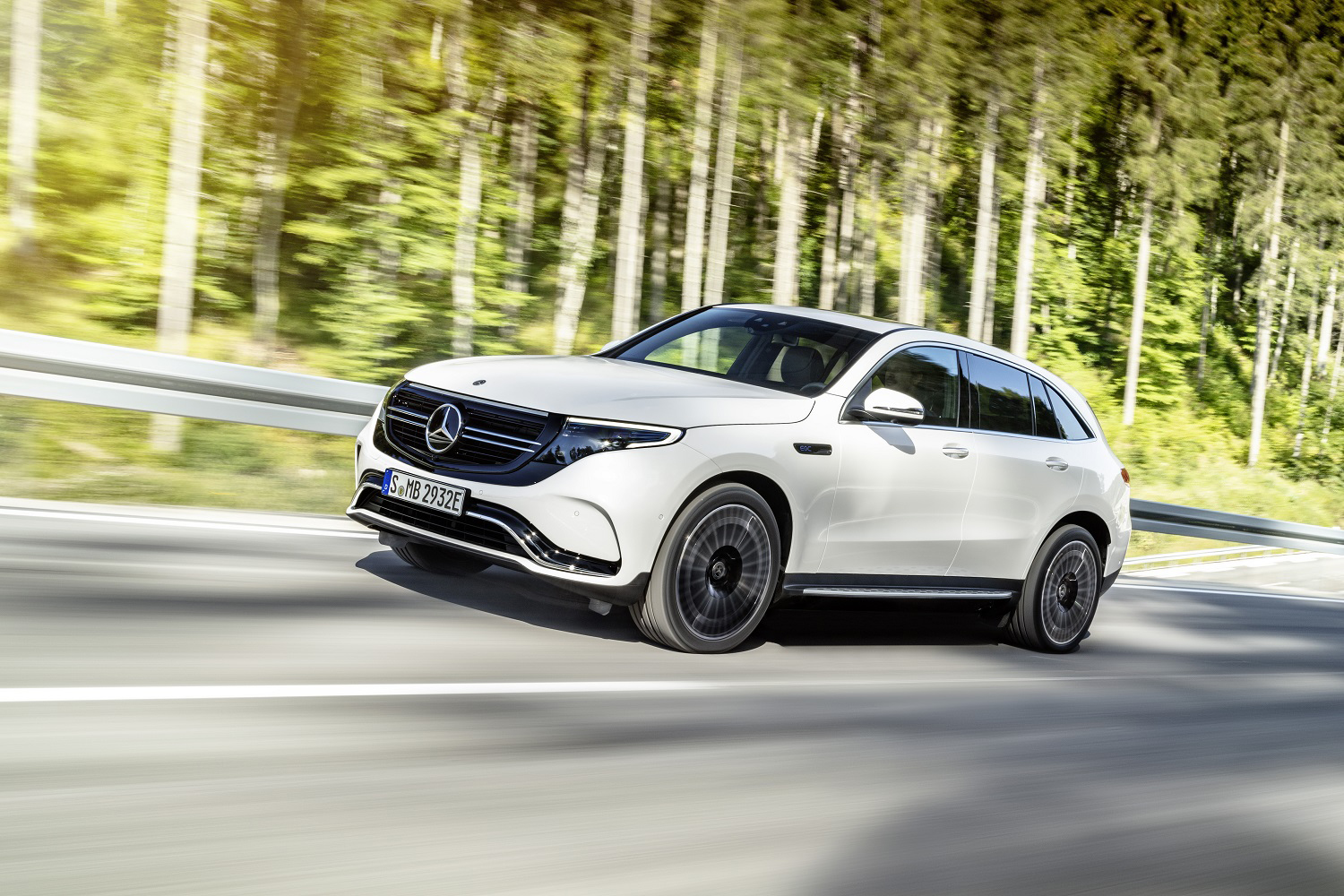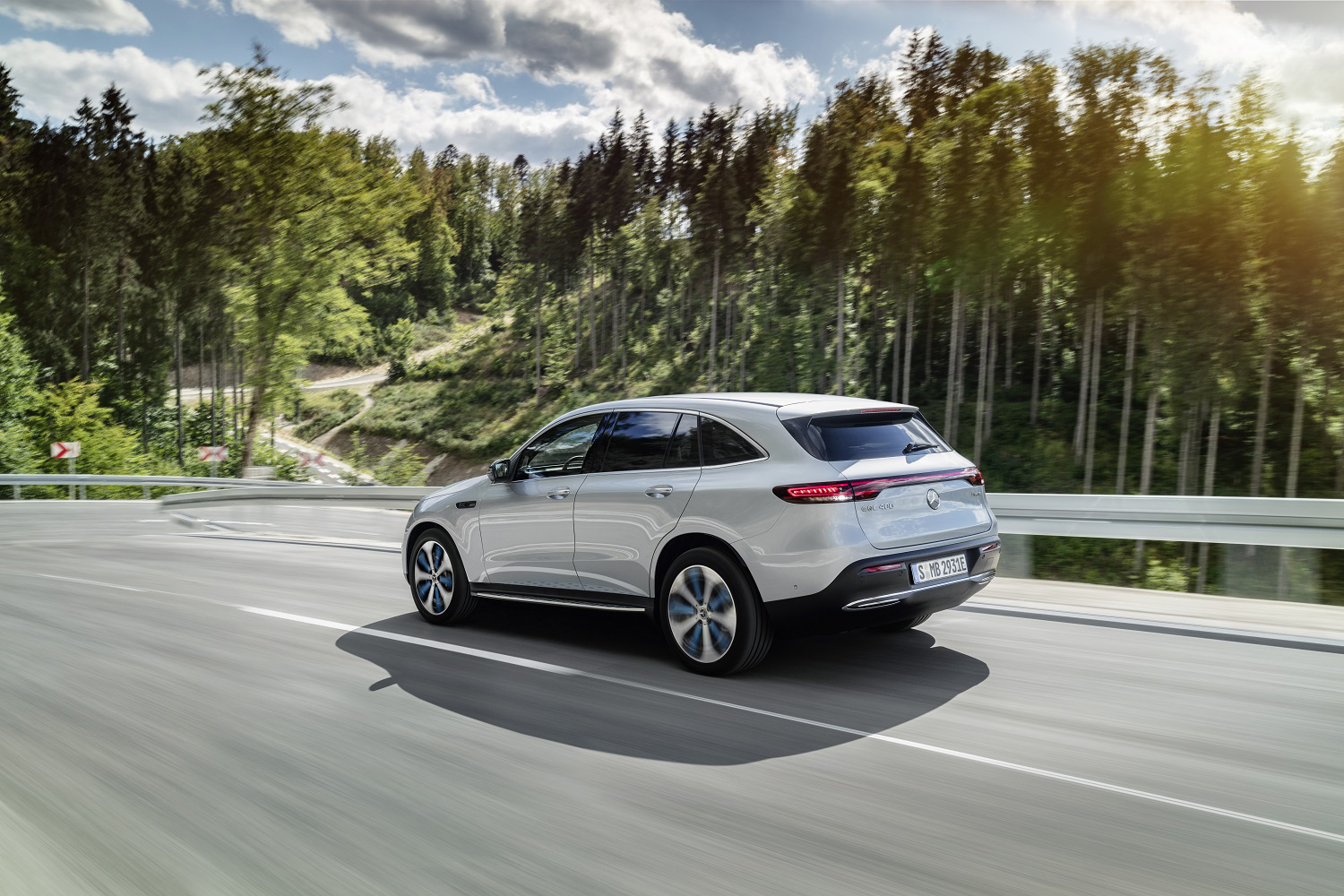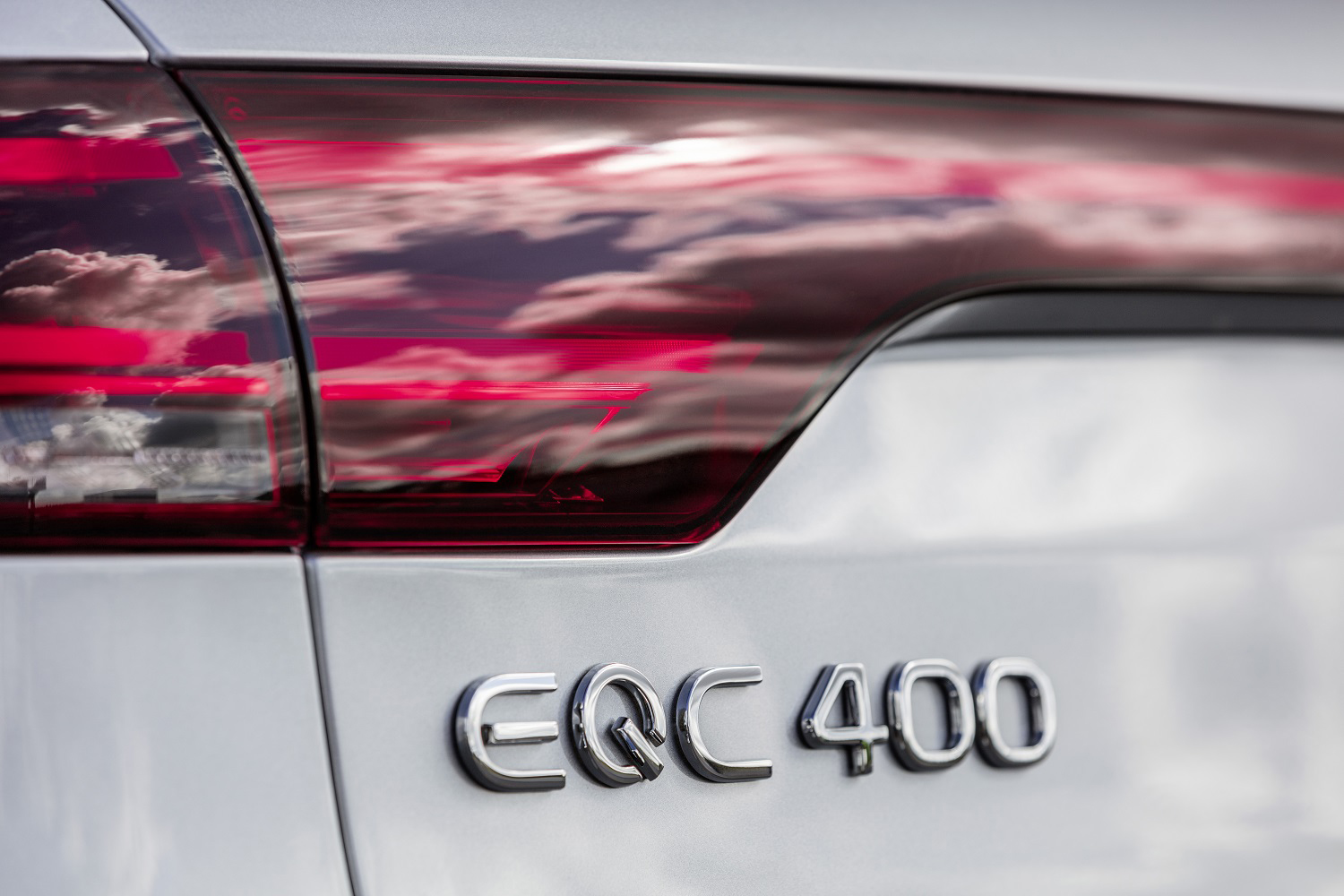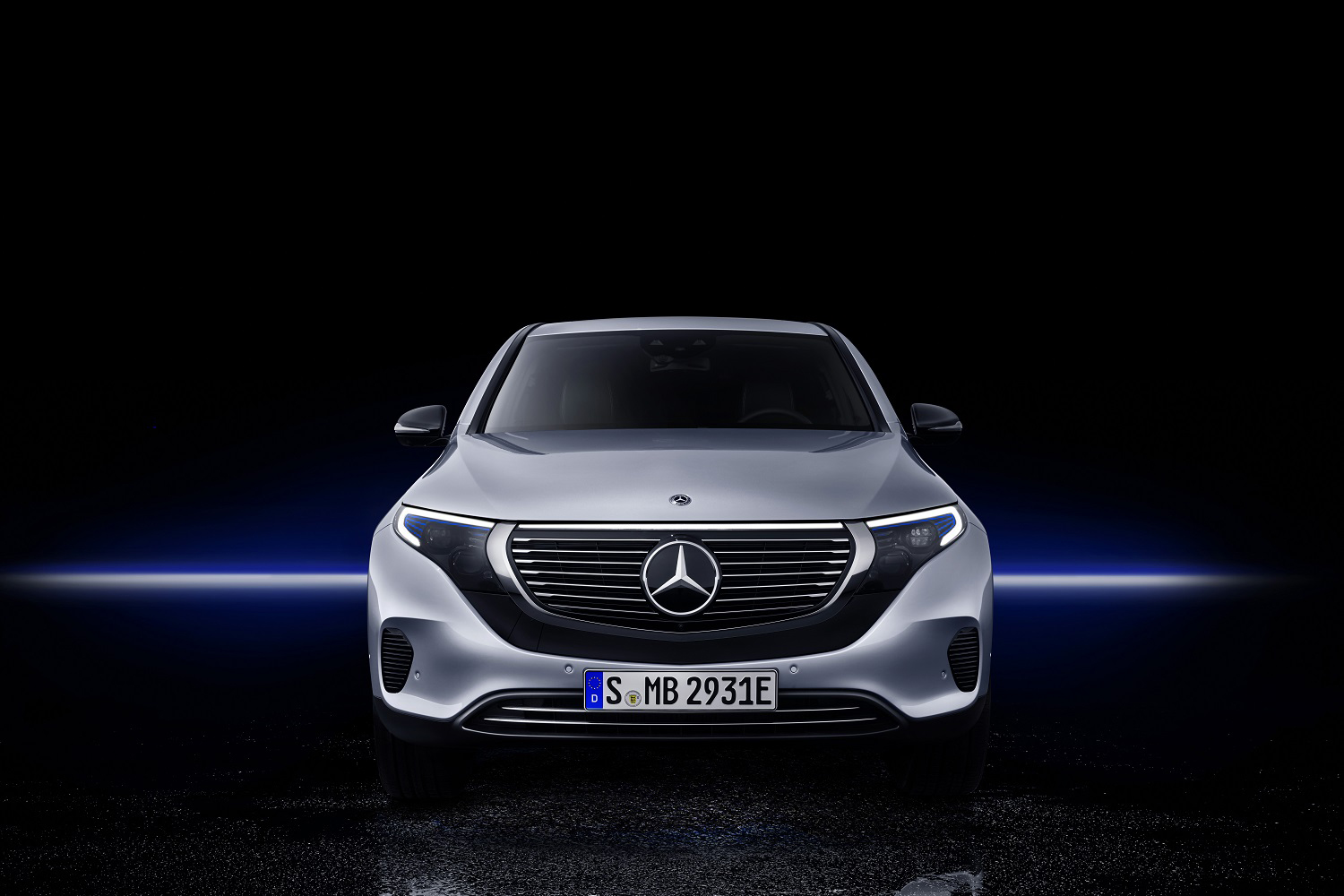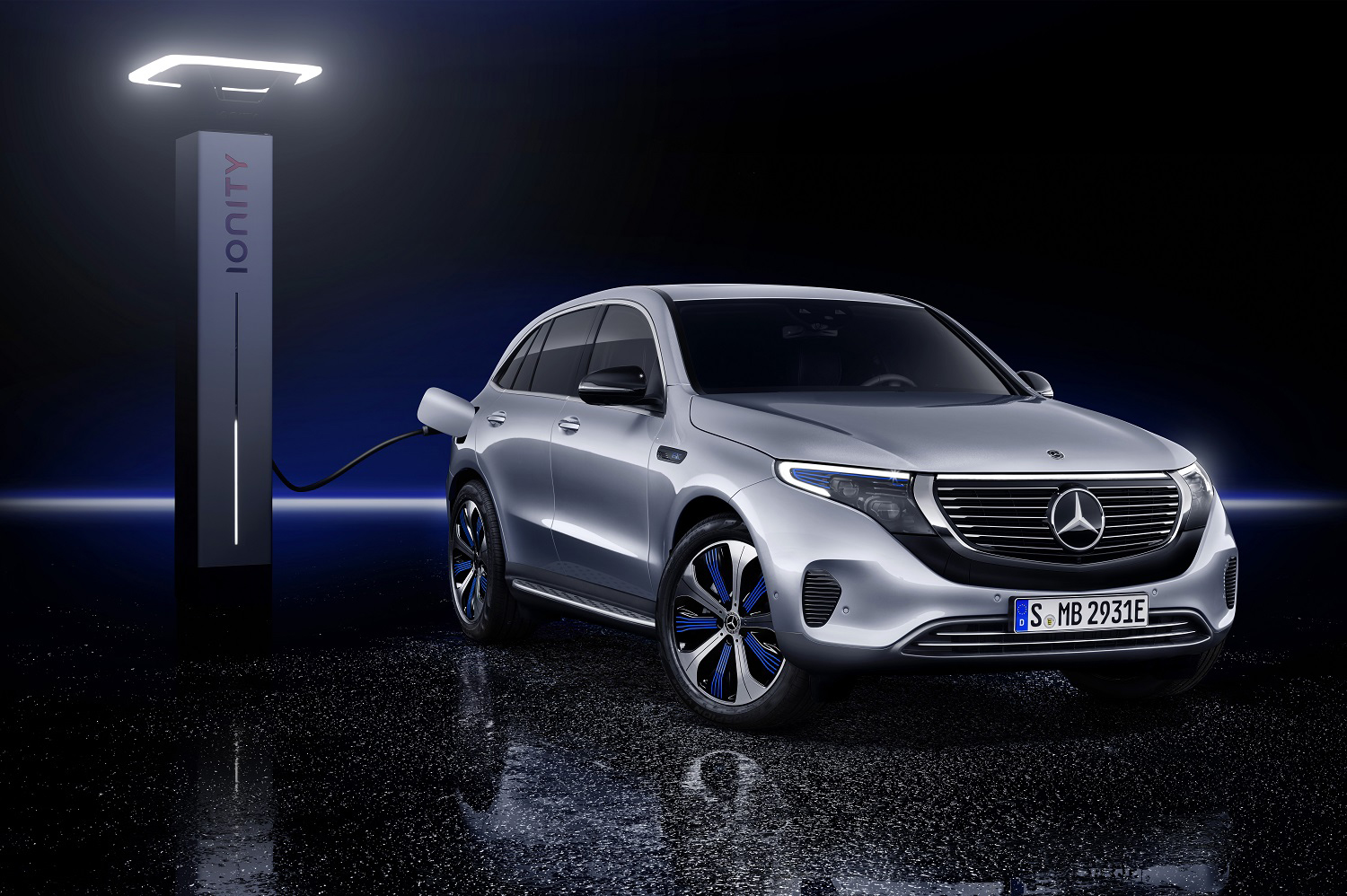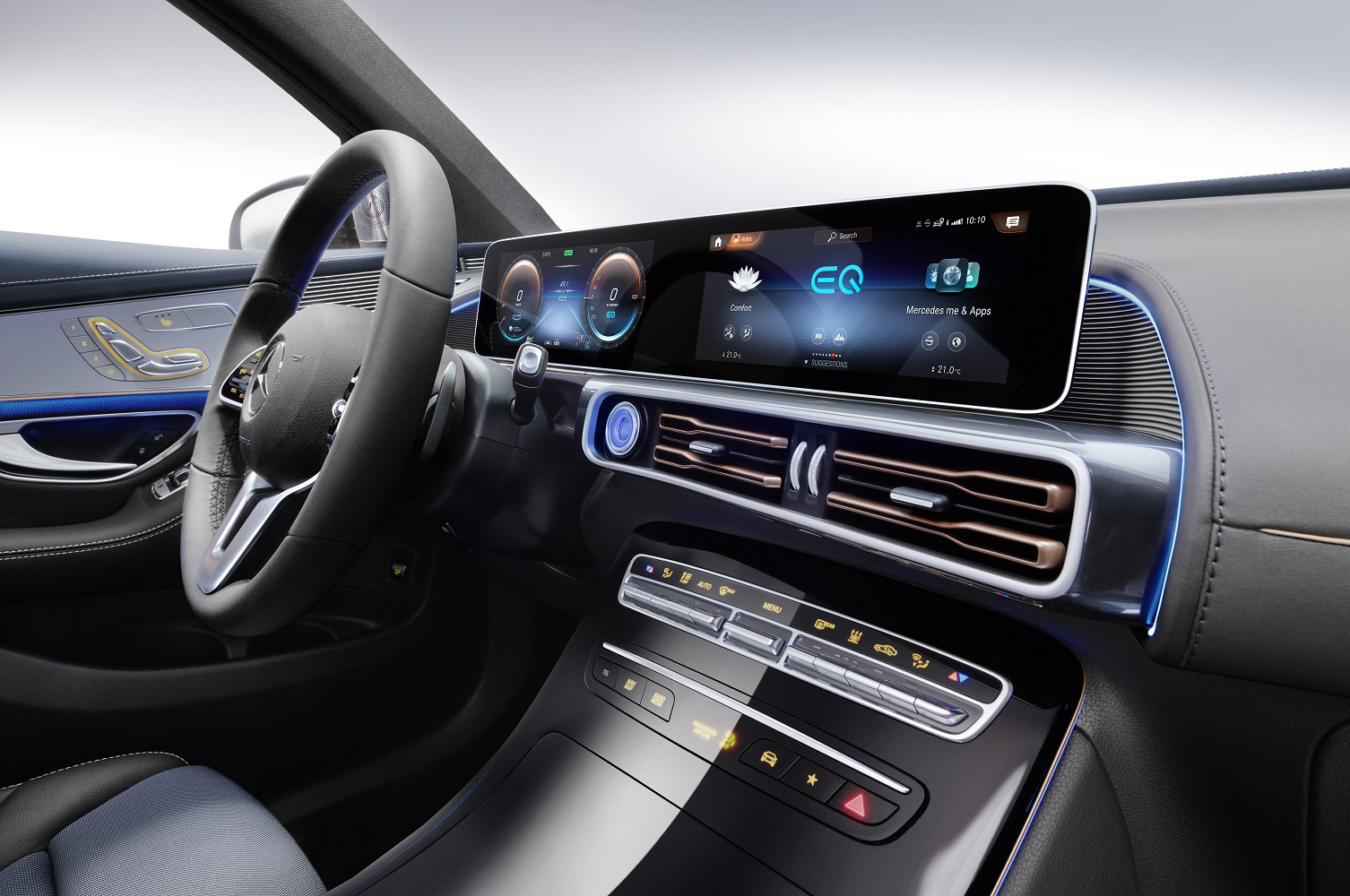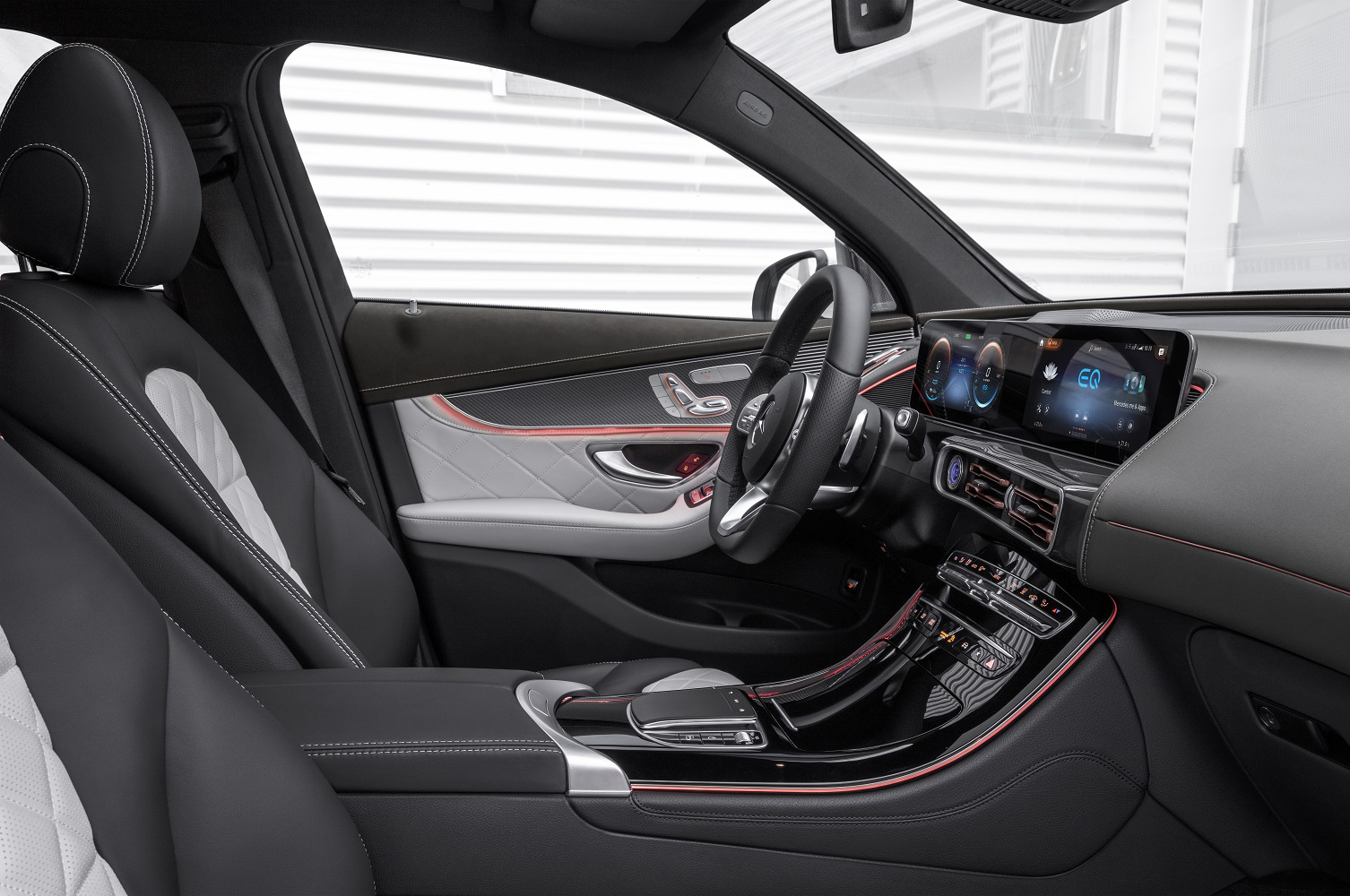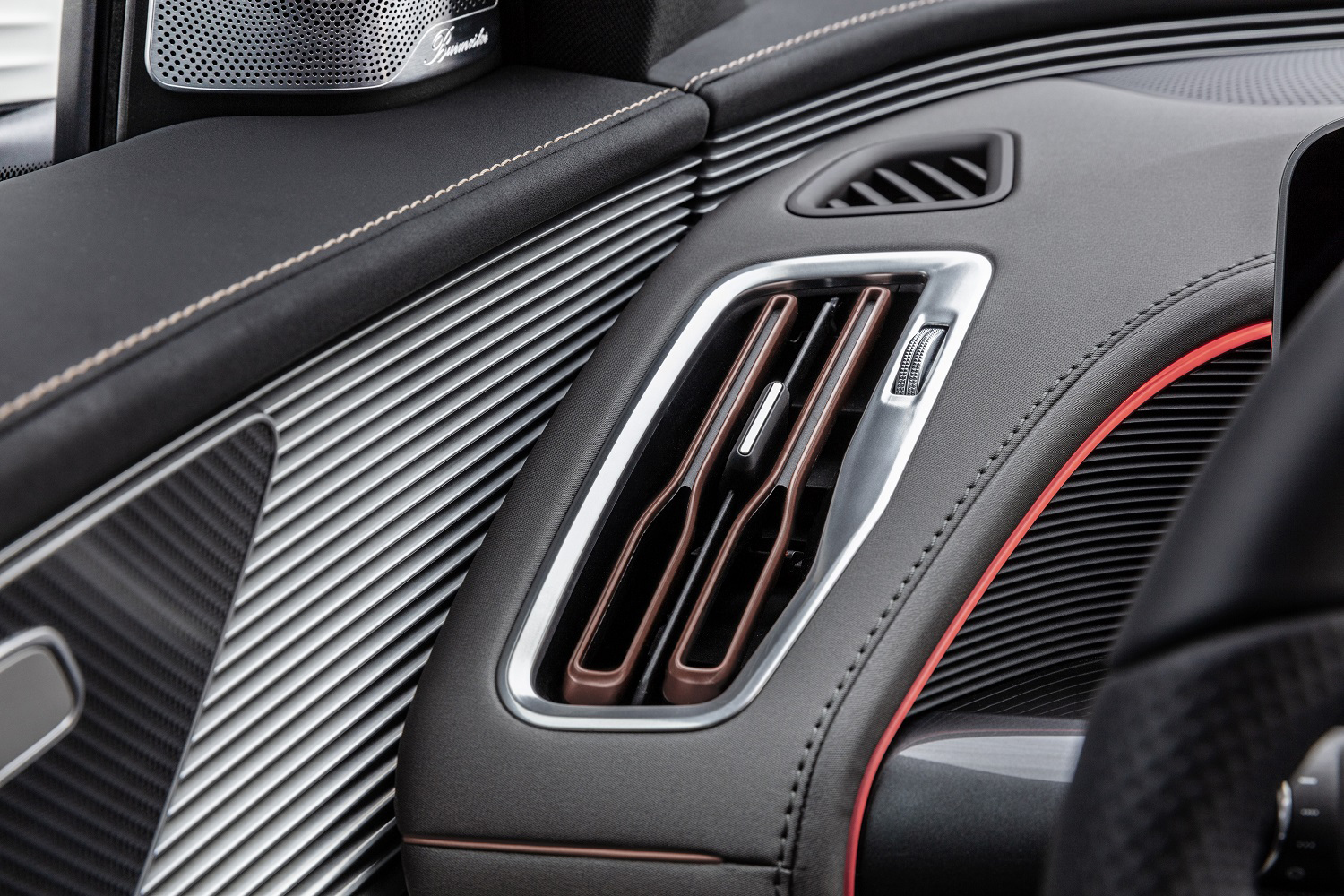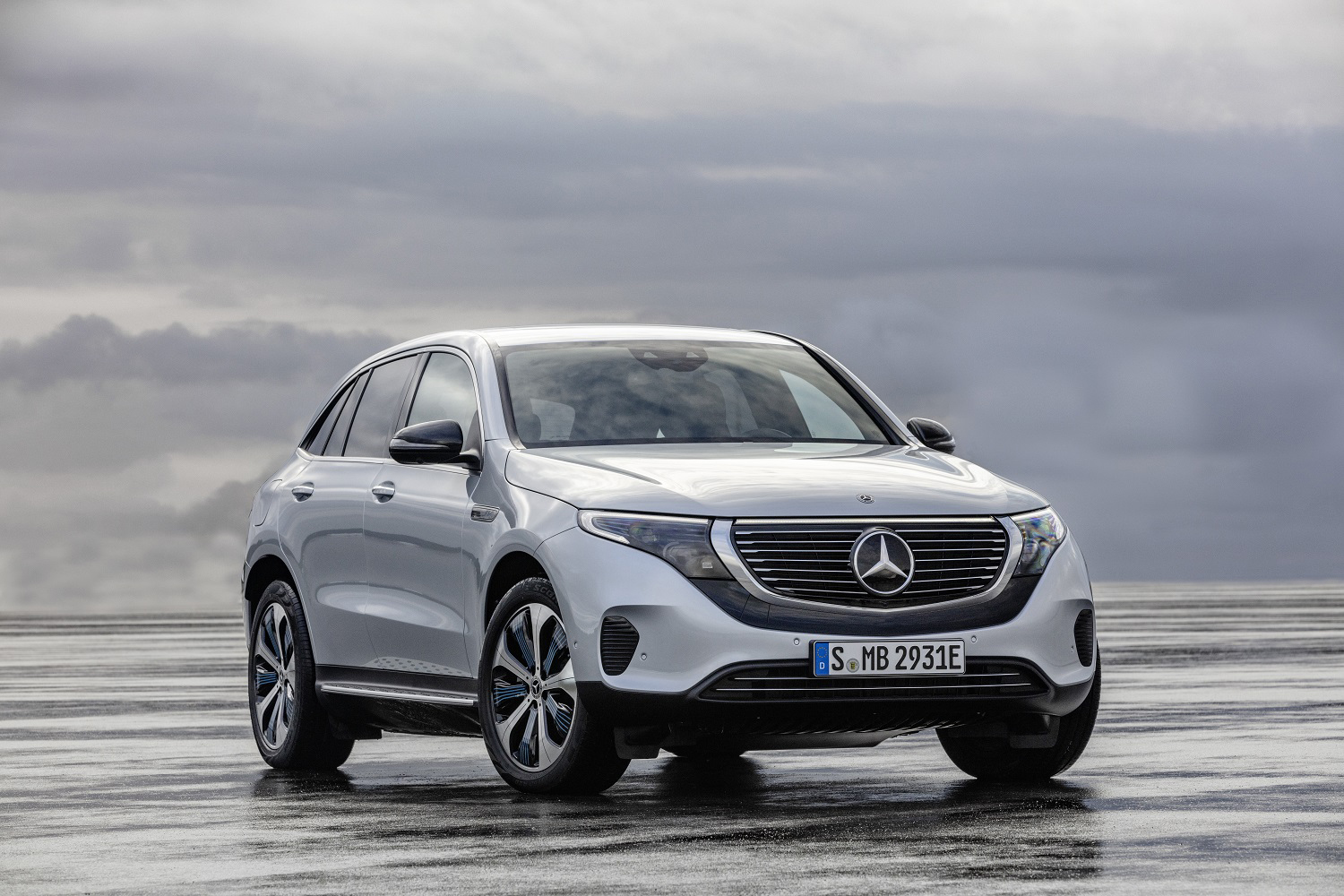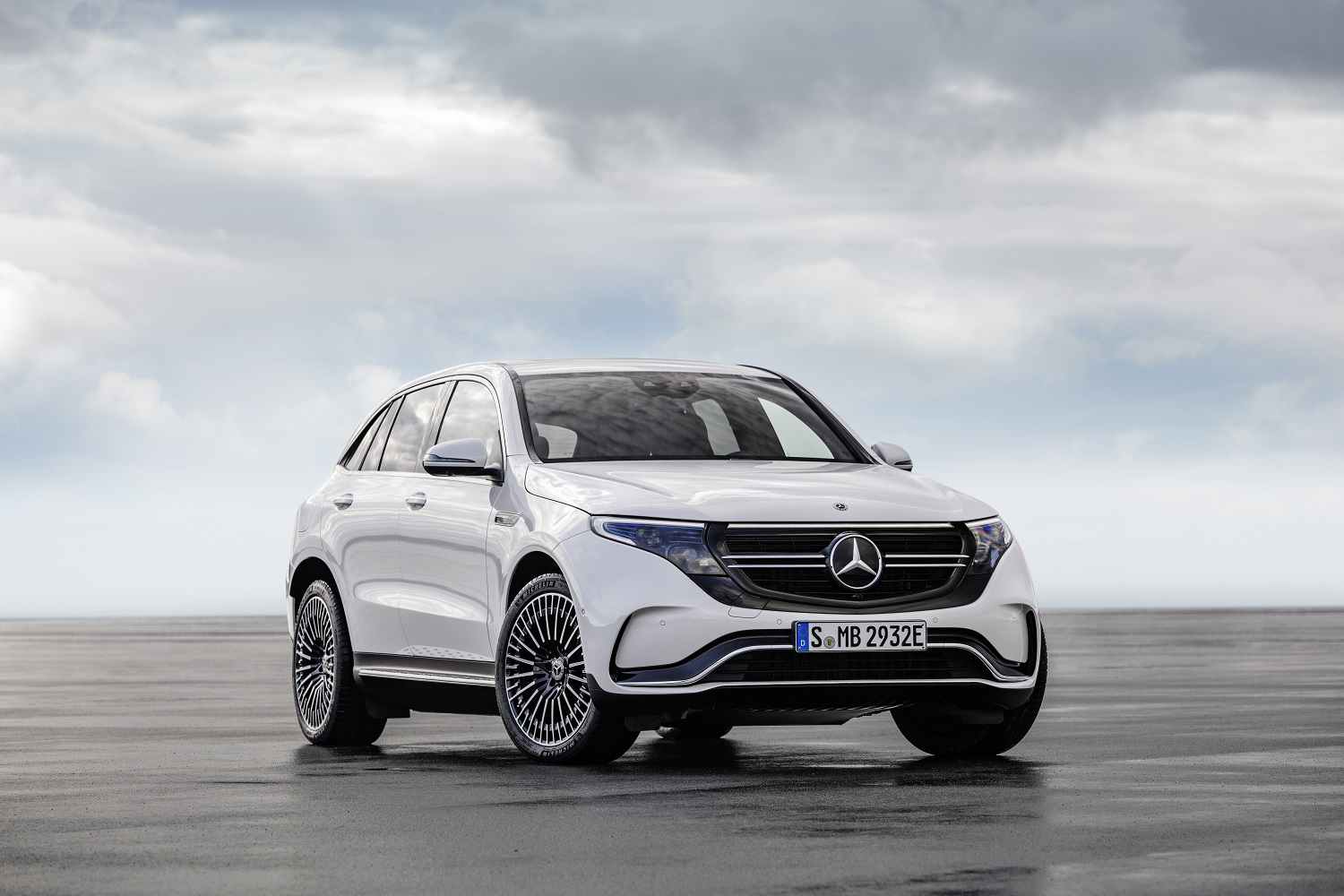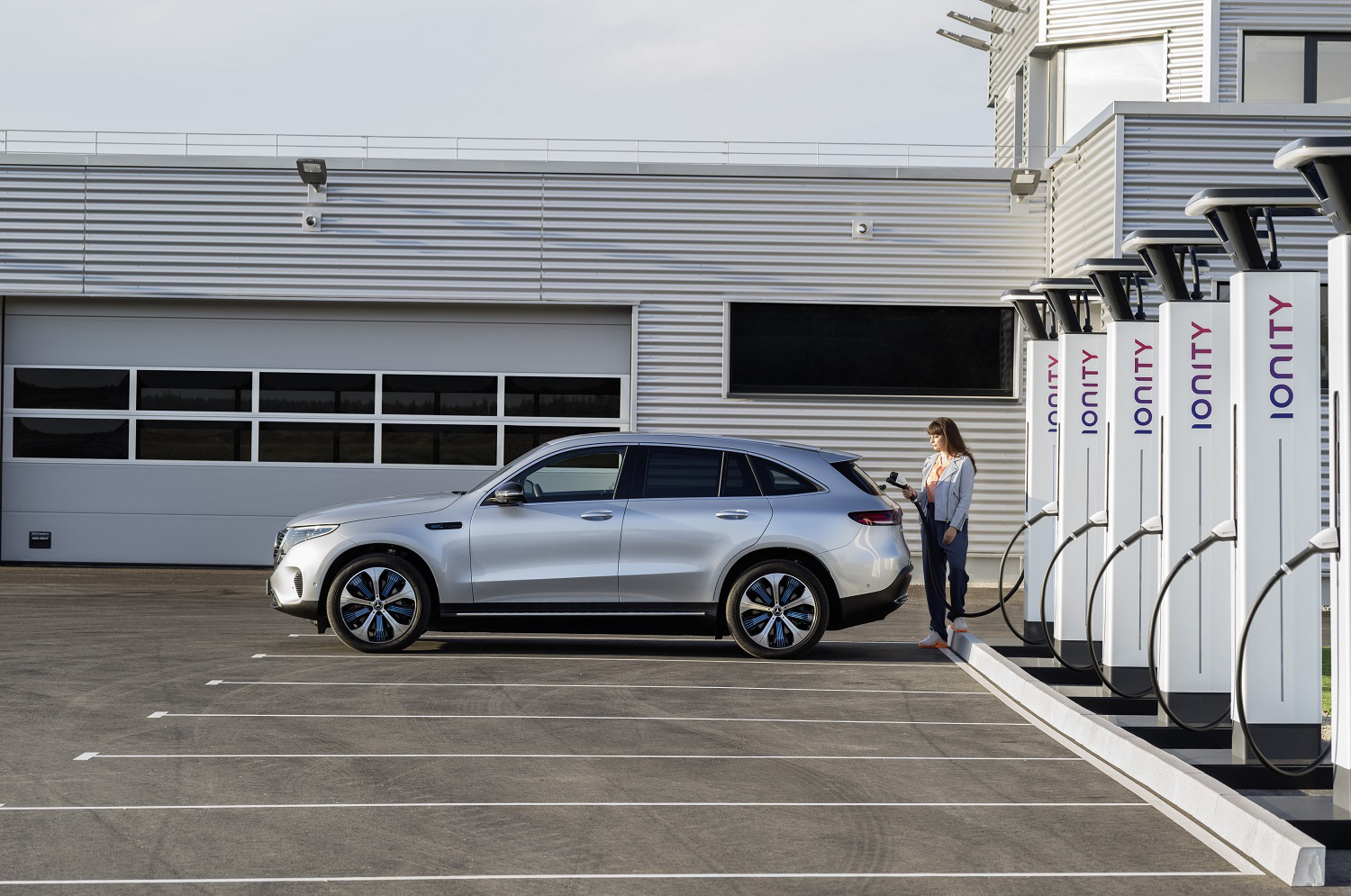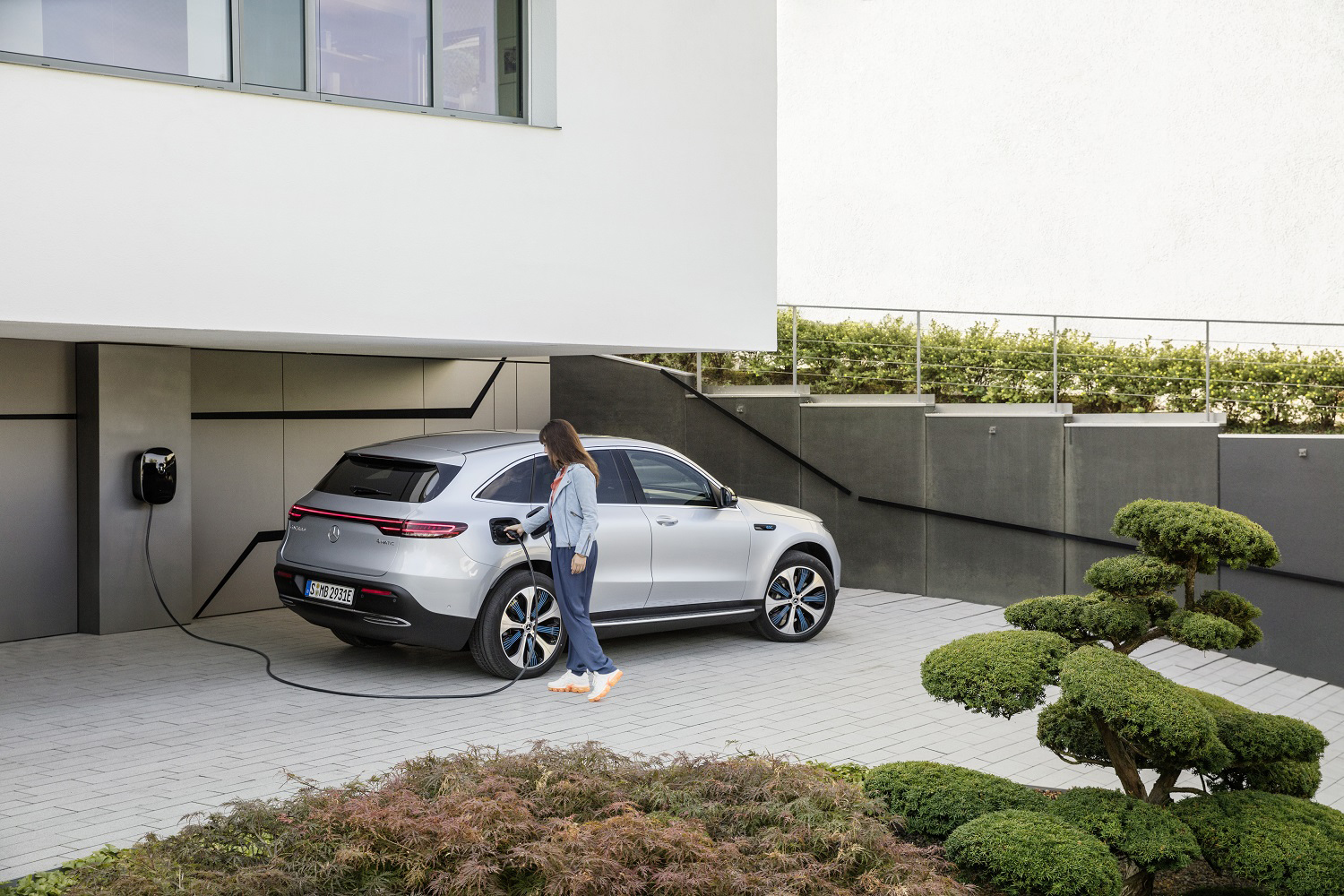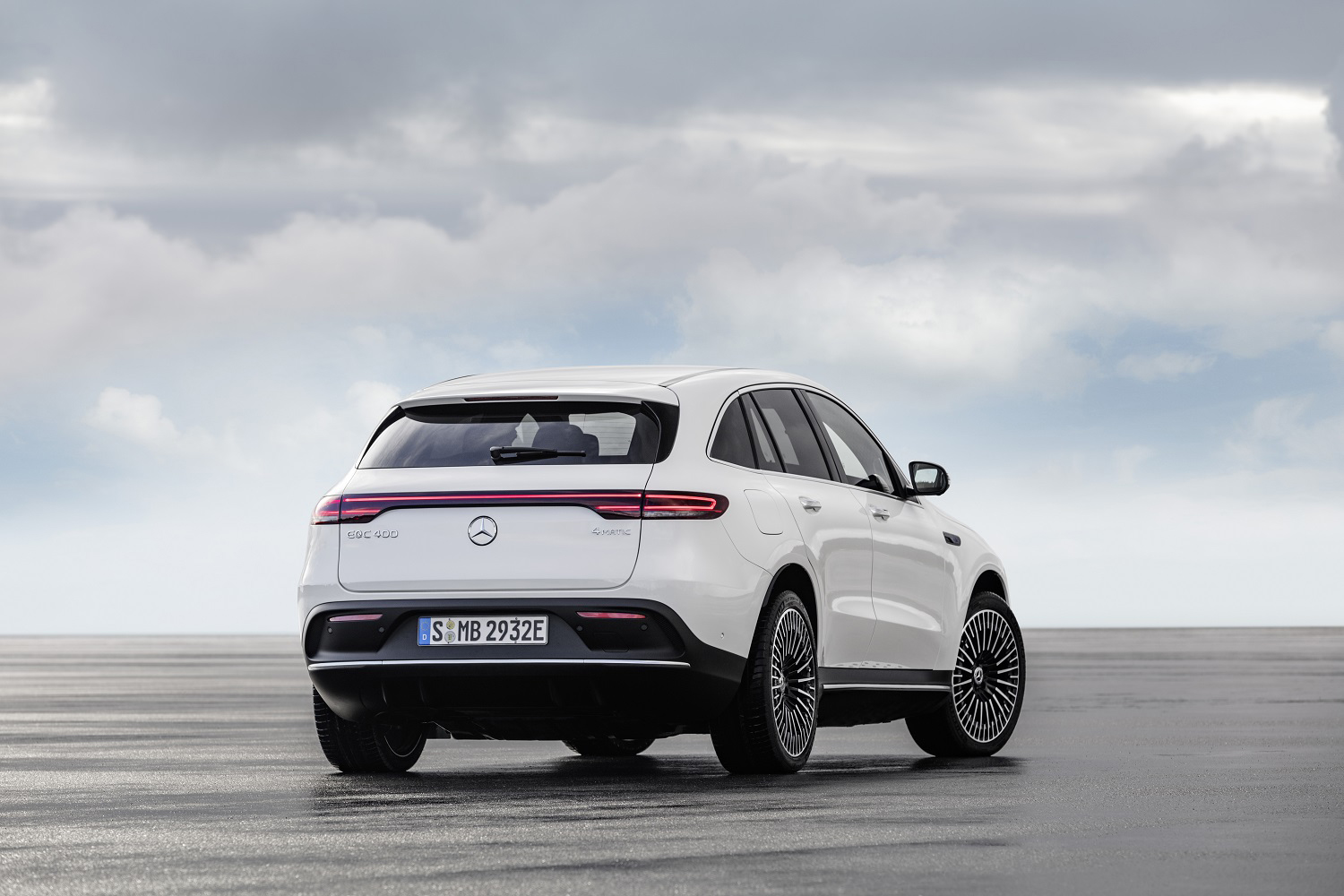Mercedes-Benz launched its electric car offensive when it unveiled a crossover named EQC in 2018. Designed exclusively with battery power in mind, it’s one of the most high-tech cars the innovative German firm has ever released, and it will join Tesla’s growing list of nightmares when it goes on sale in early 2020.
The EQC inaugurates the EQ sub-brand, a name that stands for “electric intelligence.” It’s close to the existing, gasoline-powered GLC in terms of size, style, and proportions, but it receives an electric-specific front-end design that draws inspiration from the Generation EQ concept car we saw at the 2016 Paris auto show. The top slat in the grille lights up to connect the LED inserts in the headlights, a styling cue that gives the model a futuristic look. From the side, Mercedes designers retained the basic proportions of a gasoline-powered crossover to preserve a degree of familiarity. Moving around to the back, a thin light bar connects the taillights to create a surprisingly Porsche-like look. Blue accents all around hint at the electric power under the sheet metal.
Two high-resolution screens under a single glass pane dominate the dashboard. The left screen replaces the instrument cluster and the right one runs the latest generation of Mercedes’ MBUX infotainment system optimized for electric vehicles. Mercedes notes the navigation system takes charging times into account, for example, and lets the driver find the nearest charging station. It also provides information like opening times and available slots if it’s connected to the internet.
At launch, Mercedes will offer a single variant of the model, named EQC 400. It’s powered by an electric motor mounted over each axle, a configuration quickly becoming par for the course in this burgeoning segment. They draw electricity from an 80-kilowatt-hour lithium-ion battery pack to provide 402 horsepower — hence the 400 part of the nameplate — and 564 pound-feet of torque. Mercedes hasn’t released the EQC’s weight yet but promises it takes merely 4.9 seconds to perform the benchmark 0-to-60-mph sprint. That’s on par with Porsche’s agile 718 Cayman.
The EQC will join Tesla’s growing list of nightmares when it goes on sale across America in 2020.
The EQC falls a little short when it comes to range. Fully charged, its battery pack provides up to 200 miles of range, a figure that pushes it behind rivals like the Jaguar I-Pace, which offers up to 240 miles. Two hundred miles places the EQC behind cars positioned a notch or two below it, like the Chevrolet Bolt (238 miles). Mercedes notes a 110-kilowatt fast charger juices up the battery pack from 10% to 80% in 40 minutes. It hasn’t released other charging data.
Made in Germany, the Mercedes-Benz EQC will go on sale in early 2020 with a base price of $67,900 excluding a $995 destination charge and any available incentives, like the one-time $7,500 tax credit some buyers can claim from the federal government. There will be three trim levels to choose from: Progressive, Premium, and Advanced. This positioning puts the EQC right under its main rivals; Audi charges $74,800 for the E-Tron, and the Jaguar I-Pace starts at $69,500. Tesla charges about $85,000 for the Model X, which offers more driving range.
What’s next?
Officials stress the EQC is just the beginning of Mercedes’ electric car offensive. The company plans on expanding the lineup with at least three additional models named EQA, EQE, and EQS. The last letter denotes which rung of the Mercedes hierarchy they’ll sit on. The A will be A-Class-sized, the E will be E-Class-sized, and so on. We expect most of them will be crossovers rather than sedans or hatchbacks.
